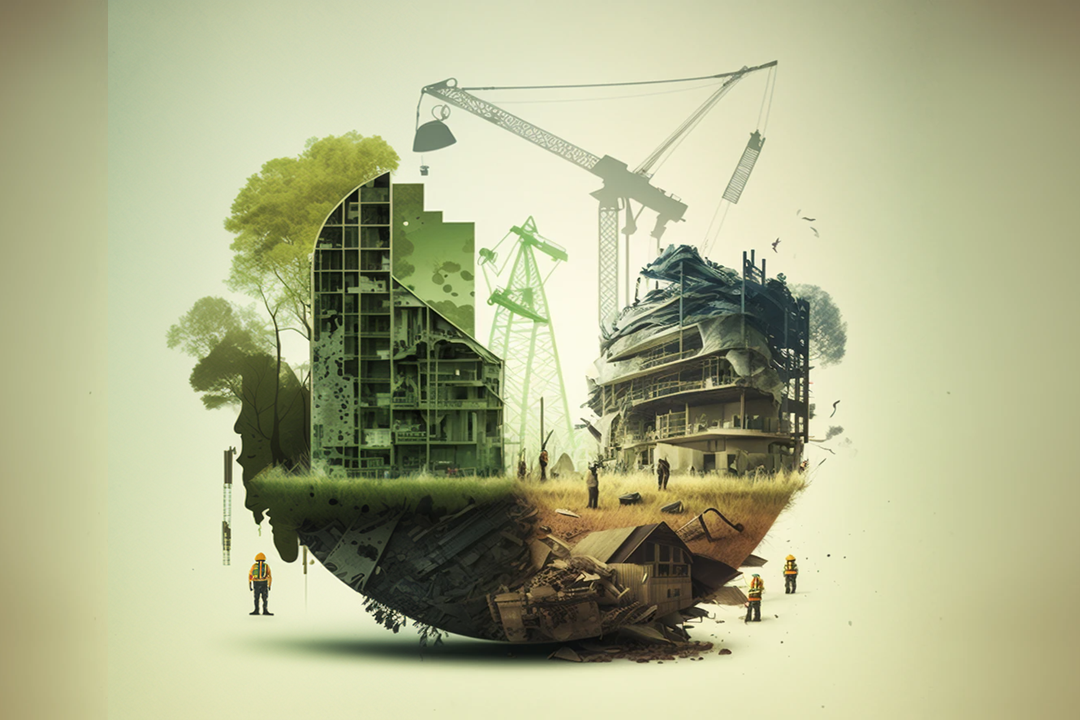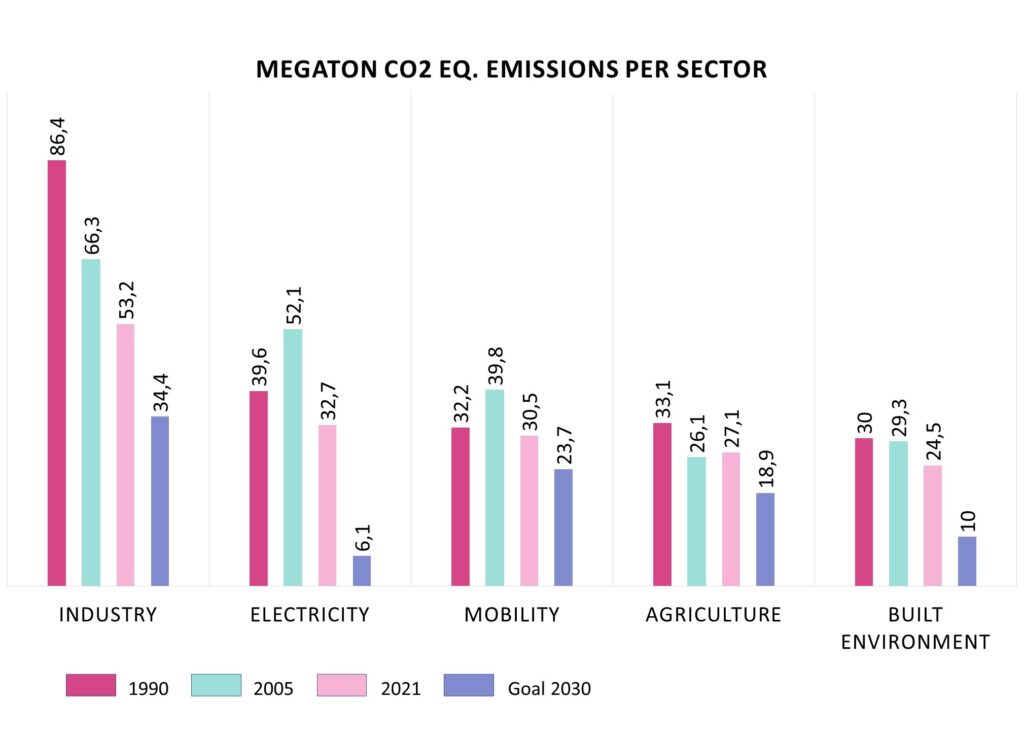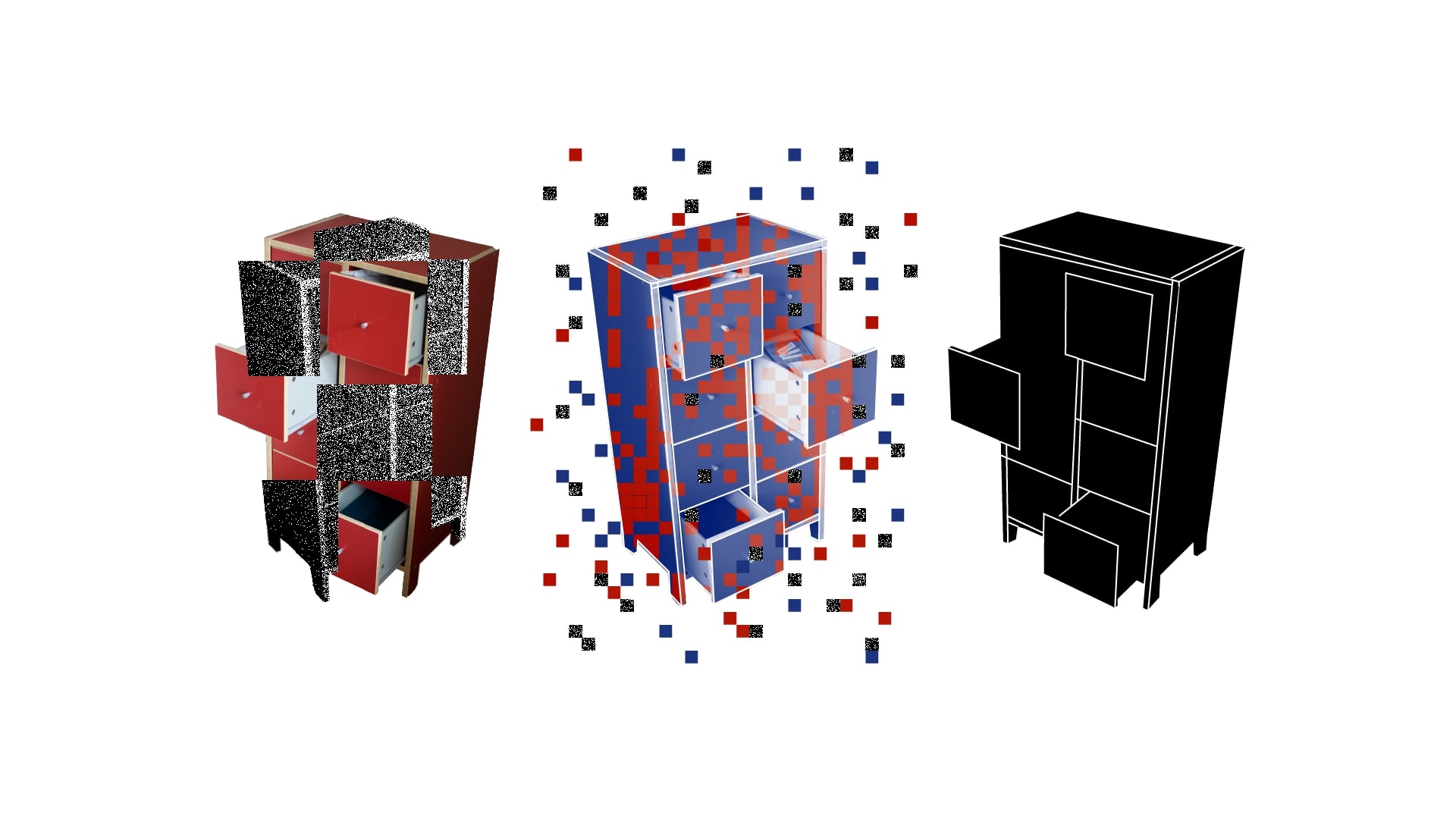Promoting Circular Economy in the Construction Sector – A view from the Netherlands

Share this Post
The construction industry is one of the oldest and largest industries in the world, and it relies on the extraction, processing, and transportation of heavy materials to create buildings and infrastructure. Consequently, the industry has a considerable environmental impact as it requires a vast amount of resources and materials, while generating a significant amount of waste. Globally, the construction sector uses almost half the materials extracted every year and is also a significant contributor to greenhouse gas emissions. Moreover, the land area of built property is expected to double by 2060 to accommodate the largest wave of urban growth in human history, with resource extraction and emissions expected to sharply climb as a result. Accordingly, the recognition of the acute need to prioritize and accelerate the transition from a linear to a circular system in the construction sector is gaining momentum among policymakers and industry leaders across the world.
The Netherlands is a leading example in introducing circularity to the construction sector. Building on their existing sustainable objectives and standards, the country has implemented various initiatives and collaborations to deliver on their circular economy ambitions. These efforts have led to significant reductions in CO2 emissions, with a decrease of 18% compared to 1990 in 2021.
What is the environmental footprint of the construction sector in the Netherlands?
The environmental impact of the construction sector in the Netherlands becomes evident when looking into its resource usage. Overall, the Dutch construction sector alone is accountable for an estimated 50% of raw materials consumed in the country, 40% of the total energy consumed, 30% of the total water consumed and 50% of all waste produced (2014/2015 data). Refer to the figure below to benchmark the megaton CO2 eq. of construction sector with other Dutch sectors.

Source: This work is adapted from “Hoe groot is onze broeikasgasuitstoot?” by CBS, RIVM/Emissieregistratie, accessed March 13, 2023, used under CC BY 4.0.
What is the Netherlands doing to make its construction sector more circular?
In order to develop and realize a fully circular economy by 2050 for all sectors, the Dutch government launched a nationwide program, The Netherlands Circular in 2016 followed by a raw materials agreement (Grondstoffenakkoord) in 2017. Over 150 endorsements were made by companies, civil society organizations, financial and educational institutions, think tanks, governments and other organizations. In 2018, a strategic document, titled the “Circular Construction Economy Transition Agenda” was introduced by an interdisciplinary team of experts from government, academia and the industry. Consequently, the 2019 Circular Economy Implementation Program (‘Uitvoeringsprogramma Circulaire Economie’) was launched, translating the construction transition agenda into concrete actions leading up to 2023.
Nevertheless, the Dutch construction sector still faces several challenges in transitioning to a more circular economy. Dutch decision makers have identified the complex and fragmented supply chains in the sector, as well as the lack of standardized data, as two of the main obstacles that are yet to be overcome.
Complex and fragmented supply chains
The complexity of supply chains presents a major challenge to promoting circular economy in the Dutch construction sector. This complexity is due to the large number of actors involved in the supply chain, each with their own views on sustainability and circularity, e.g. project- and asset managers, architectural and engineering firms, large and small contractors, suppliers and others. In addition, the current focus on price and quality does not always allow ‘circularity’ to play an equally important role in the negotiation of the work process. Furthermore, there is a labor shortage and mismatch in the skills needed to accelerate the transition towards circular practices across the supply chain.
Recognizing the importance of coordination and collaboration between the different supply chain partners to accelerate transition towards circular practices, the Dutch government has set up a number of programs and initiatives to support the development of circular building materials and technologies, and to promote the use of circular building concepts:
- Encouraging collaboration and partnerships: The Netherlands has fostered a collaborative approach among government, industry, and academia to drive progress in the circular economy in the construction sector. An example is the Foundation Dutch Green Building Council (DGBC), a national civil society organization established in 2008 with 350 members committed to rapidly making the built environment future-proof. DGBC is part of the World Green Building Council.
- Promoting circular design and procurement: The Dutch government is promoting circular design and procurement in the construction sector by implementing specific requirements in procurement processes, such as the Circular Building Index, Building Information Modelling, and National Environmental Database (NMD). Furthermore, in line with the objectives outlined in the Circular Construction Economy Transition Agenda, the Platform Circular Construction 2023 (CB’23) has developed guidelines for the implementation of circular procurement and design in the industry. These guidelines provide practical steps for businesses and organizations to effectively incorporate circularity principles into their construction projects.
- Creating awareness and educating about circular economy: The Netherlands has also made significant efforts to raise awareness and educate people about the circular economy. For example, various events, workshops, and training programs have been organized. Cirkelstad is one such initiative that emerged from public and private entrepreneurs who were seeking solutions to two key issues: reusing residual flows and utilizing local talents.
- Setting ambitious targets: The Dutch government has set ambitious targets, such as a 50% reduction in the use of primary abiotic raw materials (minerals, fossils, metals), to encourage material innovation and the development of circular building materials and technologies as well as decrease nitrogen emissions by 60% by 2030 and greenhouse gas emissions by 49% by 2030.
These initiatives and solutions have shown some success, with the Dutch construction industry achieving a recycling and reuse percentage of 88% according to the Circularity Gap Reporting Initiative (CGRI). However, more needs to be done to increase the use of secondary sources, as only 8% of the materials used in the built environment come from such sources.
Overall, the Dutch government and industry are taking a targeted approach to address the complexity of supply chains and promote circular economy in the construction sector. By fostering collaboration, implementing standardized procurement requirements, developing skills, encouraging material innovation, and promoting circular business models, the industry is well-positioned to address these challenges and accelerate the transition towards a more circular economy.
Lack of standardized and accessible data
The second acknowledged challenge relates to data as the construction sector is considered one of the least digitalized sectors of the Dutch economy and there is strong interest among policymakers to support its digitalization. Data-driven solutions can help to manage building maintenance and operation, material design, distribution and logistics, construction processes, and waste management can help the sector to both innovate and cut material use and emissions. The current lack of standardized and accessible data for materials used in the construction industry constitutes a key challenge to advancing circularity as it makes it difficult to track and manage materials throughout their life cycle. Without detailed high-quality information, it is difficult to identify opportunities for the reuse or recycling of materials, and to assess the environmental impact of different materials and construction methods. For instance when it comes to mapping flows or executing environmental assessments (e.g. Material Flow Analyses, the Material Circularity Indicator, the Building Research Establishment Environmental Assessment Method, green design principles, Cradle2Cradle, and Life-Cycle Assessments), there is no unified standard for capturing and monitoring all data in the sector. Recognizing the importance of data, the Dutch government has set up a number of programs and initiatives to standardize data and make it accessible:
- Investing in research and development: The National Environmental Database (NMD) is an example of how the Dutch government has set up a platform to calculate the environmental performance and circularity of individual building materials and products. The product cards in the NMD are supplied by manufacturers and sectors and are based on LCA environmental data.
- Setting up “material passports for buildings”: Dutch architect Thomas Rau, co-founder of Madaster, a public online library of materials and products in the build environment, writes in his book Material Matters: “Waste is material without an identity.”. The overall goal of a material passport is to document all (secondary) resources present in construction to maximize reuse potential. This is in line with the EU proposal to implement Digital Product Passports for materials. Moreover, it contributes to one of the core principles of a circular economy, namely to circulate products and materials at a high value (for the longest period of time).
- Digitalizing from bottom-up: digiGO is an example of a platform which enables the collaboration of different systems. It’s set-up to decentralize data and currently run by a team of national government, big clients/users, builders, technicians, suppliers and knowledge institutions. They are working together on the transition to building with BIM, and accelerating digitization of the built environment.
Although significant efforts have been made towards implementing a circular economy, from a European perspective, the digitalization of the construction sector is hindered by three main factors: the high cost of equipment and software, a lack of skilled workforce, and a lack of awareness and understanding of digital technologies. These factors present significant obstacles to the adoption of digital technologies across the European construction industry, which could improve efficiency, productivity, and sustainability. Therefore, it is essential to develop new strategies to overcome these challenges and to promote the benefits of digital technologies to encourage wider adoption by the construction sector.
Promoting Circularity in the Dutch Construction Sector: Reflections and the way forward
As part of the growing efforts to drive forward the transition to a Circular Economy, decision makers in the Netherlands are shifting their focus away from the back-end of the supply chain e.g. recycling or burning waste for energy towards upstream activities in the supply chain. This includes strategies aimed at designing out waste and introducing modular constructions and high-value re-use.
The Dutch construction sector is making significant strides towards achieving full circularity by 2050, as evidenced by the ambitious objectives set in The Netherlands Circular. Traditionally, the sector has prioritized material quality, functionality, and price, but it is now shifting towards alternative material characteristics e.g. secondary and/or renewable, circular design, e.g. designing out waste and/or modular design for lifetime extension, and new forms of partnership such as shared ownership and new business models. For further inspiration, see Annex 1 for examples of high-level construction phases. Sharing the developments and progress made by the Dutch construction sector could aid decision makers in other countries in accelerating their respective transition processes towards a circular economy.
Annex 1
Examples of how circularity can be applied in each high-level construction phase (design, development, use and re-use).

Table 1. Examples of circular economy practices applicable in each high-level construction phase
The opinions expressed in this text are solely that of the author/s and do not necessarily reflect the views of the Israel Public Policy Institute (IPPI) and/or its partners.
Share this Post

Are Facebook and Its New Oversight Board Up to the Task When It Comes to Health Misinformation?
With much fanfare, Facebook’s newly established Oversight Board recently released its first batch of decisions on the social…

How is Artificial Intelligence (AI) changing the workplace?
Algorithm management in the workplace Artificial intelligence (AI) is becoming an integral part of the ordinary workplace. Various…

The Weakest Link: Why we Cannot Look at our Information Environment Platform-by-Platform
Over the past year, as the gravity of the Covid-19 pandemic dawned on governments and people around the…
